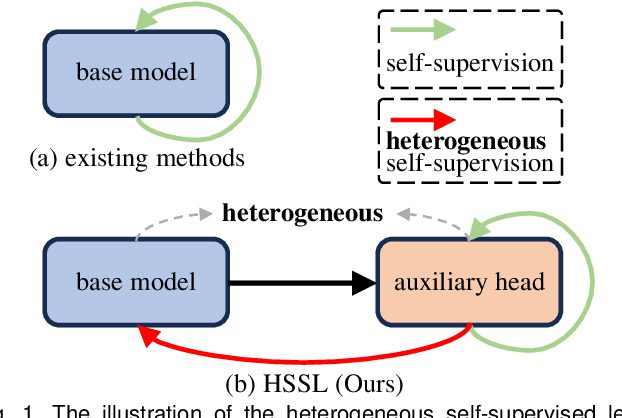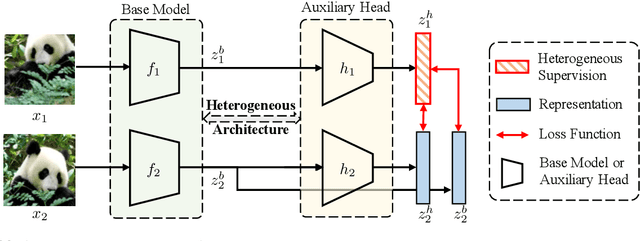Enhancing Representations through Heterogeneous Self-Supervised Learning
Paper and Code
Oct 08, 2023



Incorporating heterogeneous representations from different architectures has facilitated various vision tasks, e.g., some hybrid networks combine transformers and convolutions. However, complementarity between such heterogeneous architectures has not been well exploited in self-supervised learning. Thus, we propose Heterogeneous Self-Supervised Learning (HSSL), which enforces a base model to learn from an auxiliary head whose architecture is heterogeneous from the base model. In this process, HSSL endows the base model with new characteristics in a representation learning way without structural changes. To comprehensively understand the HSSL, we conduct experiments on various heterogeneous pairs containing a base model and an auxiliary head. We discover that the representation quality of the base model moves up as their architecture discrepancy grows. This observation motivates us to propose a search strategy that quickly determines the most suitable auxiliary head for a specific base model to learn and several simple but effective methods to enlarge the model discrepancy. The HSSL is compatible with various self-supervised methods, achieving superior performances on various downstream tasks, including image classification, semantic segmentation, instance segmentation, and object detection. Our source code will be made publicly available.
 Add to Chrome
Add to Chrome Add to Firefox
Add to Firefox Add to Edge
Add to Edge